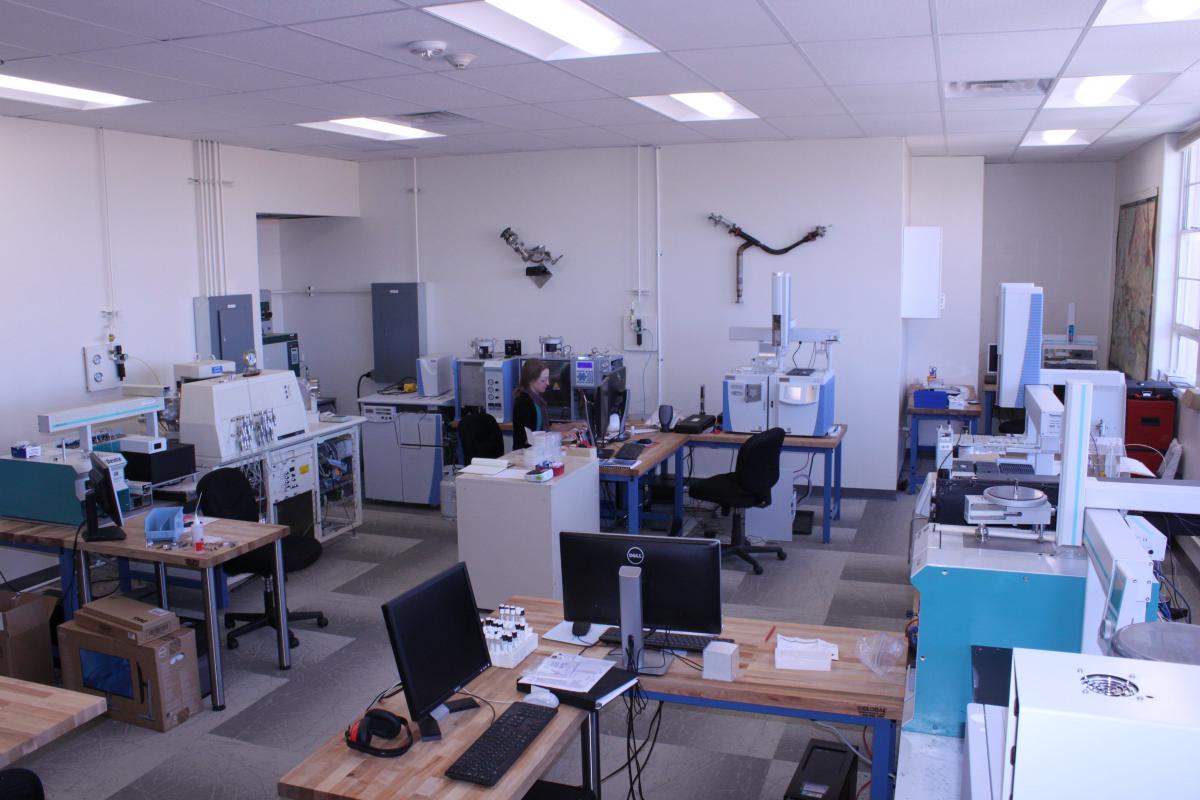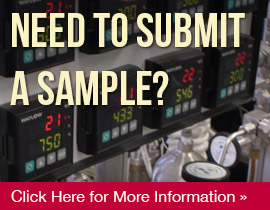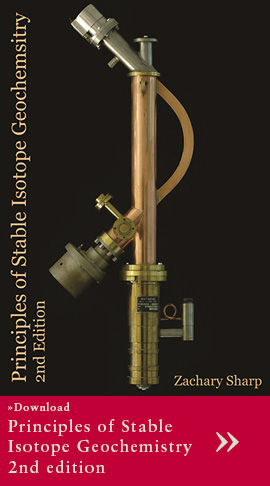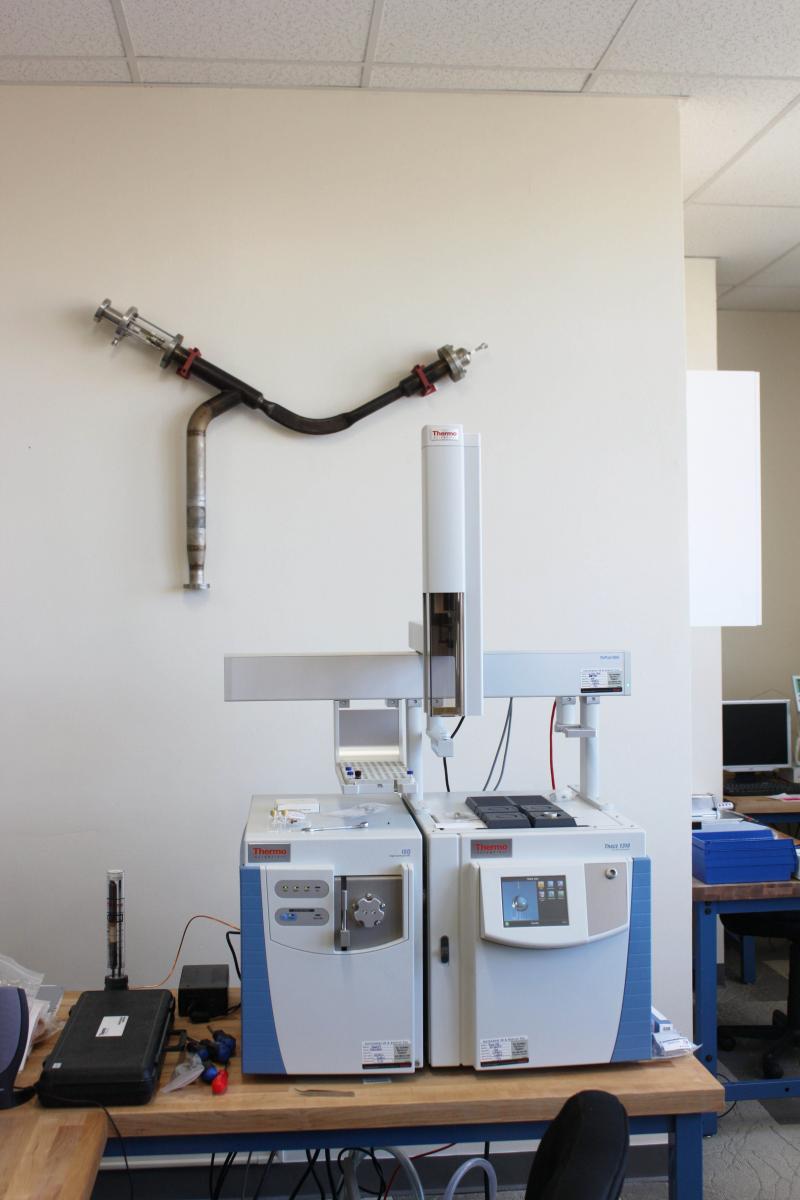UNM–CSI consists of four newly renovated climate-controlled rooms (~2500 ft2) equipped with seven isotope ratio mass spectrometers, one quadrupole gas chromatograph mass spectrometer (GC-MS) system, and laboratory space for processing a variety of samples for isotope analysis. Below is a short description of each instrument and their current peripheral configurations.
 UNM–CSI is also equipped with a full glass blowing facility, a small mineral separation facility, including micro-saws, a magnetic separator, microscopes, dissecting equipment and heavy liquid-acid digestion facilities, five Sartorius microbalances, three convection drying ovens, a high-temperature muffle furnace, hot water bath, sonicator, freeze-drier, and a number of centrifuges for processing a variety of geological and biological samples. Laboratory space (~2000 ft2) for sample preparation is located in Northrop Hall 333 (Earth and Planetary Sciences) and Castetter Hall 235 (Biology). Contact Zach Sharp or Viorel Atudorei to use the facilities in Northrop Hall and Seth Newsome to use the facilities in Castetter Hall.
UNM–CSI is also equipped with a full glass blowing facility, a small mineral separation facility, including micro-saws, a magnetic separator, microscopes, dissecting equipment and heavy liquid-acid digestion facilities, five Sartorius microbalances, three convection drying ovens, a high-temperature muffle furnace, hot water bath, sonicator, freeze-drier, and a number of centrifuges for processing a variety of geological and biological samples. Laboratory space (~2000 ft2) for sample preparation is located in Northrop Hall 333 (Earth and Planetary Sciences) and Castetter Hall 235 (Biology). Contact Zach Sharp or Viorel Atudorei to use the facilities in Northrop Hall and Seth Newsome to use the facilities in Castetter Hall.
In addition, UNM–CSI has a radiocarbon (14C) preparation laboratory under the direction of Keith Prufer (Anthropology).



 Thermo Scientific Delta V mass spectrometer with a dual inlet and Conflo IV interface that is configured for compound-specific stable isotope analysis. The system includes a TRACE 1310 gas chromatrograph with TriPlus liquid injection autosampler coupled to a GC IsoLink II combustion interface capable of measuring δ13C, δ15N, and δ2H values in a variety of individual compounds including amino and fatty acids. This instrument is also equipped with a GasBench II that is primarily used for measuring δ13C and δ18O in carbonates and δ13C in CO2.
Thermo Scientific Delta V mass spectrometer with a dual inlet and Conflo IV interface that is configured for compound-specific stable isotope analysis. The system includes a TRACE 1310 gas chromatrograph with TriPlus liquid injection autosampler coupled to a GC IsoLink II combustion interface capable of measuring δ13C, δ15N, and δ2H values in a variety of individual compounds including amino and fatty acids. This instrument is also equipped with a GasBench II that is primarily used for measuring δ13C and δ18O in carbonates and δ13C in CO2. Thermo Scientific Delta V mass spectrometer with a dual inlet and Conflo IV interface connected to a Costech 4010 elemental analyzer (EA), and a high-temperature conversion elemental analyzer (TCEA). This instrument is the workhorse of UNM–CSI and is capable of measuring δ13C, δ15N, δ18O, and δ2H values of bulk organic substrates such as plant and animal tissues.
Thermo Scientific Delta V mass spectrometer with a dual inlet and Conflo IV interface connected to a Costech 4010 elemental analyzer (EA), and a high-temperature conversion elemental analyzer (TCEA). This instrument is the workhorse of UNM–CSI and is capable of measuring δ13C, δ15N, δ18O, and δ2H values of bulk organic substrates such as plant and animal tissues. Thermo Scientific ISQ single quadrapole GC-MS coupled to a second TRACE 1310 gas chromatograph with TriPlus liquid injection autosampler capable of identifying and quantifying the concentration of unknown compounds using the 2014 NIST reference library.
Thermo Scientific ISQ single quadrapole GC-MS coupled to a second TRACE 1310 gas chromatograph with TriPlus liquid injection autosampler capable of identifying and quantifying the concentration of unknown compounds using the 2014 NIST reference library.